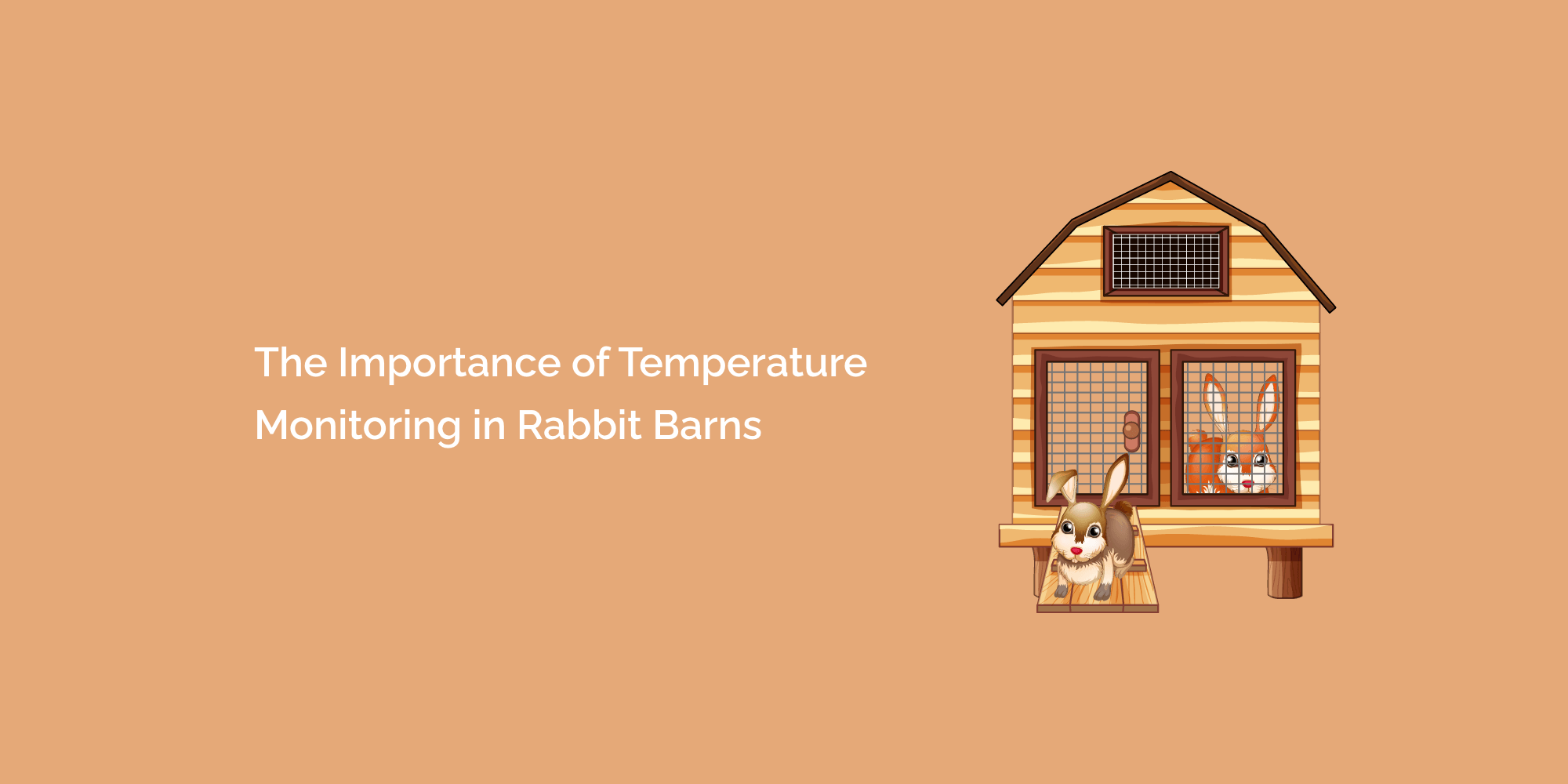Rabbit farming has been a popular venture for centuries, owing to the economic benefits and the growing demand for rabbit products. Successful rabbit farming requires meticulous attention to the animals' welfare, and one crucial factor that significantly impacts their health and productivity is temperature.
Temperature monitoring in rabbit barns plays a pivotal role in maintaining a conducive environment for rabbits, ensuring their well-being, reproduction, and overall farm profitability.
In this comprehensive blog, we will delve into the vital importance of temperature monitoring in rabbit barns and explore the numerous benefits it brings to the farm.
Understanding the Rabbit's Sensitivity to Temperature
Rabbits are sensitive animals, and their physiology is closely linked to the surrounding environmental conditions. Unlike some livestock, rabbits cannot efficiently regulate their body temperature, making them more vulnerable to extremes.
Temperature fluctuations can lead to stress, decreased feed intake, reproductive issues, and even mortality. By monitoring the temperature in rabbit barns, farmers can identify potential risks early and take necessary measures to prevent any adverse effects on their rabbit population.
Optimal Temperature Range for Rabbit Barns
Maintaining the right temperature is essential for rabbit welfare and productivity. The optimal temperature range for rabbits typically lies between 10°C to 20°C (50°F to 68°F). Temperatures above or below this range can result in heat stress or cold stress, respectively, which negatively impacts the rabbits' health and productivity. Through precise temperature monitoring, rabbit farmers can ensure that the barn's climate falls within the optimal range, providing the best conditions for their animals.
Health Impacts of Inadequate Temperature Monitoring
Failure to monitor and control the temperature in rabbit barns can have severe consequences for the animals' health. Heat stress can lead to dehydration, reduced appetite, and heat stroke. On the other hand, cold stress can cause hypothermia and increased susceptibility to respiratory illnesses.
Furthermore, temperature-related stress can weaken the rabbits' immune systems, making them more susceptible to various diseases. Consistent temperature monitoring can prevent these health issues and promote better overall rabbit well-being.
Temperature and Reproduction
Temperature has a significant impact on rabbit reproduction. Extreme temperatures can disrupt the breeding cycle and decrease fertility rates. Inadequate temperature control can also lead to low conception rates and an increased number of stillbirths. Monitoring the temperature in the barn ensures that the rabbits' reproductive health is optimized, resulting in higher breeding success and healthier offspring.
Preventing Temperature-Related Deaths
Temperature-related deaths are a concern in rabbit farming, especially during extreme weather conditions. During hot spells, rabbits may succumb to heat exhaustion, while freezing temperatures can be fatal to them.
By implementing temperature monitoring systems, farmers can detect deviations from the safe range promptly and respond with appropriate cooling or heating measures, potentially saving the lives of their rabbits.
Energy Efficiency in Temperature Control
Effective temperature monitoring not only benefits the rabbits but also aids the farm's overall energy efficiency. By using automated temperature monitoring systems, farmers can fine-tune their heating and cooling equipment to operate only when necessary. This reduces energy consumption and, in turn, saves costs while minimizing the farm's carbon footprint.
Remote Temperature Monitoring
Advancements in technology have led to the development of remote temperature monitoring solutions. These innovative systems allow farmers to track temperature data in real-time, even when they are off-site. Remote monitoring provides timely alerts in case of temperature fluctuations, enabling farmers to take immediate action, irrespective of their physical location.
Integrating Temperature Monitoring into Farm Management
Temperature monitoring should be an integral part of rabbit farm management. Implementing a comprehensive system involves selecting the right sensors, installing them strategically in the barn, and setting up data analytics for regular assessment. Proper training of farm staff on the significance of temperature monitoring and its correct application is crucial for optimal results.
Success Stories: Rabbit Farms with Effective Temperature Monitoring
Numerous rabbit farms worldwide have experienced remarkable improvements in their productivity, animal welfare, and financial outcomes through efficient temperature monitoring practices. In this section, we'll highlight some success stories, showcasing the tangible benefits of prioritizing temperature control.
Conclusion
In conclusion, temperature monitoring in rabbit barns is not a luxury but a necessity for successful and sustainable rabbit farming. By understanding the sensitivity of rabbits to temperature, providing them with the right conditions, and monitoring their well-being diligently, farmers can foster a thriving and healthy rabbit population.
With the advancements in technology and the availability of innovative monitoring systems, temperature control has become more accessible and effective than ever. Embracing temperature monitoring practices is a proactive step that ensures the long-term success and welfare of the rabbits and the overall profitability of the farm.








